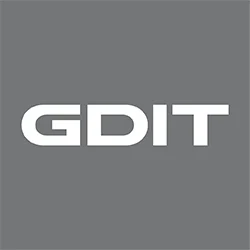Each year, National Minority Health Month is recognized as a time to raise awareness of the importance of improving health care in racial and ethnic minority communities. But identifying and infusing equity into our nation’s healthcare system is an ongoing, year-round charge, looking at areas where there has been progress and opportunities still in front of us.
The pandemic put a giant spotlight on health disparities in this country. We saw a massive divide between who could work from home and those who couldn’t; between who got sick and who didn’t; and between who recovered from covid and who lost their lives to it. For many reasons, communities of color were on the wrong side of the divide – and the metrics told the story about how big the divide was and remains today.
Health Equity is the opportunity for everyone to have good health.
Put simply, health equity is good health sustained. Those two things – good health and the ability to maintain it – are critical parts of the equation. Technology is integral to both and has enabled solutions to address access to care (think: telehealth) and prevention (think: wearables).
But it also uncovers some systemic disparities that exist and that prevent some communities from benefitting from medical technology’s advances. You can’t access telemedicine or telehealth tools without reliable internet access; you can’t work from home if you’re sick if you have an essential, front-line job; wearables are expensive; and preventative health is about more than just a device.
This is why health equity is so important. It’s what prompts us to think about the health solutions that exist, the barriers some communities may have in accessing them, and the ways in which we can close those gaps.
Intersection of AI and Health Equity
One technology that is arguably the most popular and the most potentially transformative innovation of our lifetimes is artificial intelligence. Already, AI and machine learning is being used in health to enable breakthroughs in cancer treatment and diagnosis and to identify if a skin lesion may be cancerous.
For AI and health equity, it’s important to ensure that, for example, the data being used to train AI models are without bias. For the example, ensuring models being used for dermatological use are inclusive of all skin types. Or that facial recognition tools work on all types of faces. Or that attention is given to AI solutions for conditions that benefit historically underrepresented communities.
Today, companies like GDIT, industry organizations and students at Historically Black Colleges and Universities are working to take on the challenge of eliminating bias in AI and machine learning applications. This is a challenge and a responsibility we all share – and it’s an important one. Because having more people with lived experiences at the table helps to correct issues, make tools better and improve outcomes for people in real and meaningful ways. I’m so encouraged that the technology talent pipeline is getting wider and deeper, and serving as the conduit for more inclusivity and equity in health.
Innovation, Inclusion and Health
At the end of the day, technology is a tool. You can use the tool to build, or you can use the tool to destroy. It’s the person who wields it that defines its purpose.
Our definition of technology that solves problems involves thinking about “the art of the possible,” beyond what is achievable technologically. It’s about envisioning a future where innovation is fueled by and is the net product of inclusivity and equity. It’s a reflection of the reality that our challenges are complex, and our solutions must be too, and they require the commitment and perspectives of us all to be successful.
Cornell P. Wright is an expert in the fields of health equity and justice, minority health, and community engagement and outreach. He is the former inaugural Chief Health Equity Officer at the Alliance for a Healthier Generation. He has also served with distinction as the Executive Director of the North Carolina Department of Health & Human Services Office of Minority Health and Health Disparities. To GDIT, he brings passion, commitment, expertise and awareness that are shared with clients working in service of the mission of advancing health equity for all.






